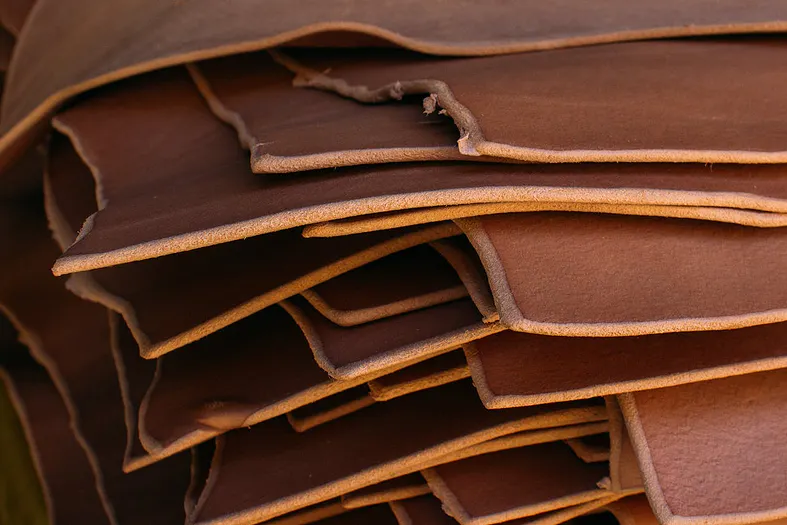During the leather tanning process, magnesium oxide, as an important alkaline regulator, has a significant impact on the quality of the leather, mainly reflected in the following aspects:

1. Improve the softness of the leather
Mechanism of action:
During the chromium tanning process, magnesium oxide can slowly release Mg²⁺, adjust the pH value, and prevent the rapid precipitation of chromium salts, thereby allowing chromium to penetrate into the skin fibers more evenly.
Since the effect of magnesium oxide is mild and will not cause excessive shrinkage of the leather fibers, the tanned leather is softer and elastic.
Application effect:
Leather with appropriate amounts of magnesium oxide feels smoother and will not be stiff or over-brittle.
Suitable for high-end leather goods, clothing leather, soft leather and other application scenarios that require high softness.
2. Strengthen the strength of the leather
Mechanism of action:
Magnesium oxide helps to form a more stable chromium complex, improves the bonding strength between chromium and leather fibers during the tanning process, and makes the leather tougher.
It also improves the tear strength and fold resistance of leather, especially in automotive and furniture leather.
Application effect:
The tensile strength, wear resistance and tear resistance of the leather have been improved, improving the durability of the finished product.
Can be used to manufacture leather products with high strength requirements, such as uppers, sofas and car seat leather.
3. Affects the shrinkage and stability of leather
Mechanism of action:
Since magnesium oxide can adjust the fixation rate of chromium, the stability of leather fibers is enhanced and excessive shrinkage is not prone to occur in high temperature environments.
A proper amount of magnesium oxide can also reduce the moisture loss of leather, improve heat resistance, and reduce shrinkage and deformation.
Application effect:
Leather is more stable during processing and use, and is not prone to dimensional changes or morphological deformation.
Suitable for leather that needs to be resistant to high temperatures, such as military boot leather, industrial protective leather, etc.
4. Improve the absorption rate of chromium and reduce pollution
Mechanism of action:
A proper amount of magnesium oxide can increase the absorption rate of chromium, reduce the residue of unfixed chromium ions during the tanning process, and thus reduce the content of Cr³⁺ in the wastewater.
This is very important for environmentally friendly leather production and helps reduce the cost and emission burden of wastewater treatment.
Application effect:
The leather manufacturing process is more environmentally friendly and meets the requirements of green production.
Suitable for the production of ecological leather and high-end environmentally friendly leather, such as vegetable tanned and chrome tanned environmentally friendly leather.
5. Improve the appearance and feel of the leather
Mechanism of action:
Magnesium oxide can make chrome tanning more evenly, reduce color spots and pattern problems, make the leather color more consistent, and the appearance is smoother and more delicate.
During the retanning process, magnesium oxide can also enhance the fullness of the leather and make the leather feel more natural.
Application effect:
The leather surface is more uniform, reducing color aberration and improving market acceptance.
Suitable for high-end luxury leather, such as handbags, wallets, leather shoes, etc.
6. Control pH to avoid excessive acidification or alkalization of leather
Mechanism of action:
During the tanning process, magnesium oxide can buffer the pH change, avoid excessive acidification and cause brittlement of skin fibers, and avoid excessive alkalinization affecting the binding of chromium.
By controlling the pH within the ideal range of 3.8-4.2, the fixation rate of chromium can be optimized and the tanning uniformity can be improved.
Application effect:
Avoid acid and corrosion of leather and improve durability.
Suitable for high-quality leather, such as luxury goods, custom leather goods, etc.
